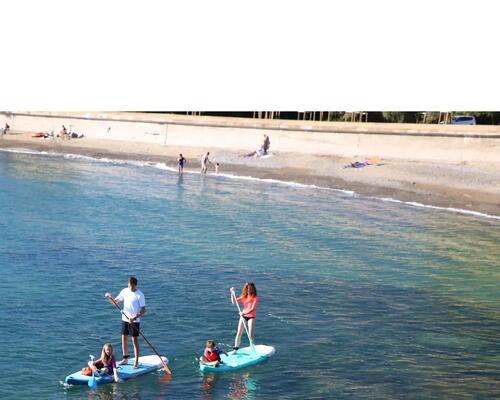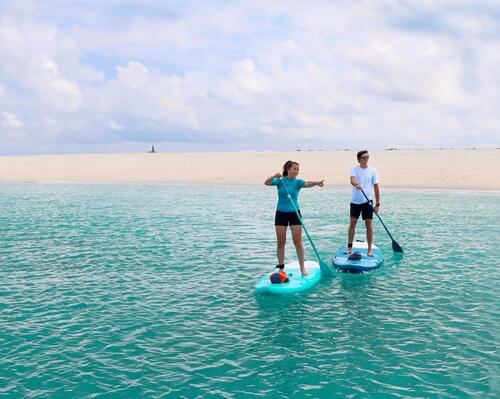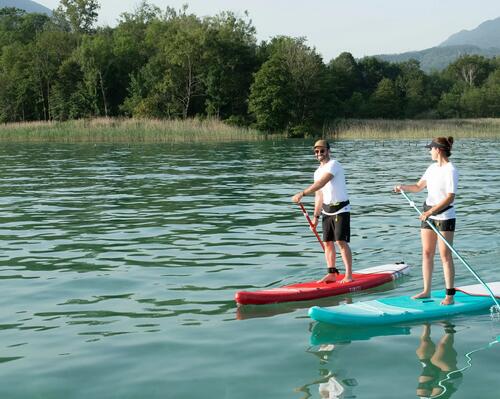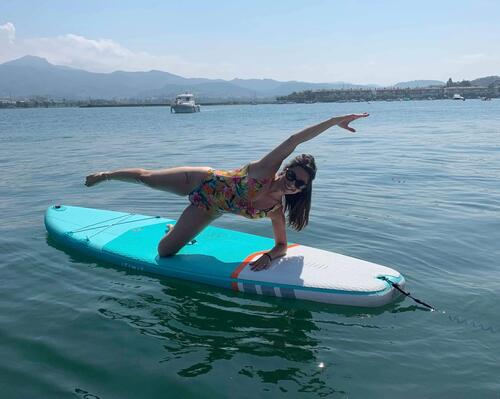"SUP yoga combines a practice that is deeply beneficial for both mind and body with an unstable element in a relaxing environment.
In yoga, you practise asanas (the physical poses). The asanas you choose to practise offer a number of benefits, from cultivating inner strength to enhancing your balance, strengthening postural muscles, increasing long-term flexibility, relaxing nervous/joint/muscular tension, controlling your breath, massaging your internal organs, stimulating and improving the flow of your body's energies and boosting your performance in other sports.
When doing asanas on the standup paddle that require strong muscular engagement with fewer points of support on the board, the benefits will be even greater due to the extra effort required from holding the pose on a moving base. The water and board will be your greatest allies in bringing harmony to your postural muscles, improving your balance, engaging all your muscles, getting a flatter stomach etc.
You can even practise yin yoga on a paddleboard. These asanas require the least amount of muscle engagement possible. They focus on finding stillness, the breath and concentration to increase your flexibility, relax the nervous system and improve your performances in other sports. What's great about SUP yoga is that it gets you out of the house, studio or gym to practise in harmony with nature to find ever greater well-being."























